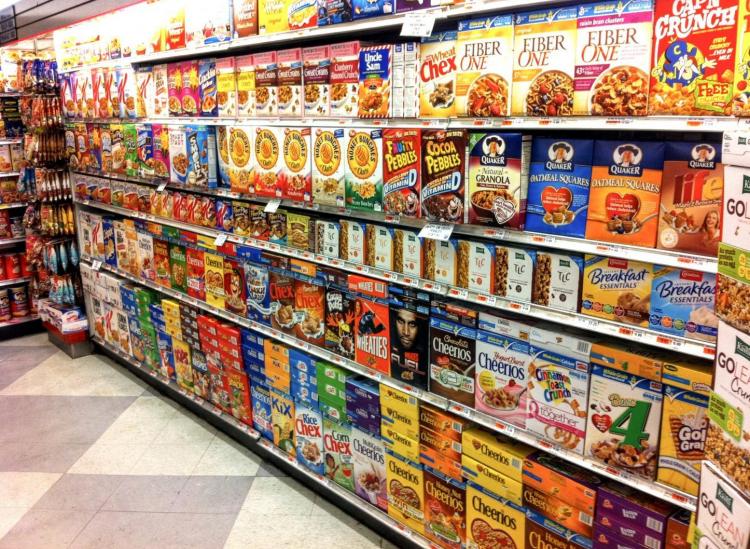This Is How To Read A Nutrition Label Properly

Wikimedia
As much as we might want to live in the produce aisle of the supermarket, we all have to venture into the land of packaged food every now and then. And that’s totally acceptable — a lot of boxed products can be good for your health, too. But you have to know how to decipher those cryptic food labels to make sure you’re actually getting the nutritional value you’re expecting. So here’s the super easy process you should follow when decoding your favorite box of granola.
Focus On Ingredients First
We know it can be tempting to first judge a food by its caloric value, but you really need to know what the food is made of to even begin deciding whether the calories are worth it. If the ingredient label is full of things you can’t pronounce, has more than 10 things on it or has sugar (or a form of it) listed sooner rather than later, it’s best to put that product back on the shelf and search for an alternative.
Then See How The Macronutrients Stack Up
You know what else matters more than calories? Your daily balance of protein, fat and carbohydrates. Whether you’re following a strict diet or just want to be mindful of your nutritional intake, these numbers can make or break the majority of your food purchasing decisions. Higher amounts of protein are typically a plus if you’re looking to curb hunger. And when it comes to fat, you want to see 0 grams of trans fats and a modest amount of the total fat coming from saturated fat, because that means the remainder is coming from good-for-you unsaturated fats.
Watch Out For Sneaky Sodium
We all need sodium in our diets, but that doesn’t mean we need as much as packaged food can offer. Everyone’s sodium sensitivity is a little different, but too much of the salty stuff can make you feel super bloated and lethargic — not to mention mess with your blood pressure as you age. So keep an eye on how many milligrams are in one serving of your packaged food and try to pick options that only pack 10 percent or less of your daily sodium needs.
See If There Are Any Nutritional Bonuses
All the vitamins and minerals listed below the protein count are there for a reason — these micronutrients keep the body healthy and thriving. So why not enjoy a boost of these babies outside your produce consumption? Lean into packaged products that are a good source of calcium, vitamin D, iron and potassium to really feel good about your processed food splurges. And while you’re at it, see how high you can get that dietary fiber content!
Finally, Check Those Calories
We saved your favorite statistic for last. Now that you understand where exactly the calories in your food selection are coming from and how they are distributed across each nutrient, you can place a real value on them. For example, 300 calories for a high-protein, high-fiber, calcium-packed breakfast bar is probably going to be way more nutritional than 150 calories for a small bag of potato chips that is high in saturated fat and sodium.
Also, pair these calorie counts with the listed serving size and make sure you’re actually going to be able to stick to that designated quantity. Because what’s the point in buying 100-calorie snacks if you know you’re just going to eat all five servings available in one sitting? If self-control isn’t on the table, put these tiny-portioned products back on their shelves and find something you know will make you feel satiated.











